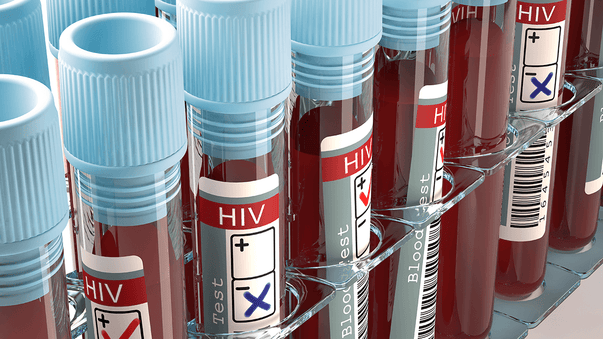Realism for the Present, Enthusiasm for the Future

Welcome to the 100th issue of Pulse! Over the last two years, we have brought to your attention a selection of exciting news in life and health sciences, ranging from the short term benefits of dietary choices and exercise to future possibilities of, for example, curing cancer, interfacing the mind to computers, and eventually enhancing human biology and mentality.
These tantalizing long term possibilities give us hope and enthusiasm for the future, which is good and important. But it’s important to bear in mind that the road from theoretical studies and experiments in the lab to operational clinical applications is long.
It’s important to temper our enthusiasm by realizing that many of the new therapy and/or enhancement options that we report, and especially the most exciting, will need ten years or more to be available to patients. IF, that is, they work in practice at all.
In other words, if you are my age (over 60), or older, you should not assume that a new cancer therapy that shows spectacular potential in the lab will be deployed in useful time for you. And those exciting possibilities of radical life extension and networked brains might materialize only for your grandchildren. Or theirs.
You should feel happy for them - for your grandchildren who might live in a world without disease and perhaps even without death. And, whatever your age, you should take advantage of what you can do, right here and now, to live a longer healthy life.
Fast, flexible ionic transistors for bioelectronic devices. Researchers at Columbia University have developed fast, flexible ionic transistors for bioelectronic devices. The new biocompatible internal-ion-gated organic electrochemical transistor (IGT), described in a research paper published in Science Advances, is fast enough to enable real-time signal sensing and stimulation of brain signals. The IGT provides a miniaturized, soft, conformable interface with human skin, using local amplification to record high quality neural signals, suitable for advanced data processing. This could lead to safer, smaller, and smarter bioelectronic devices that can be implanted in humans over long periods of time.
Counteracting T cell exhaustion in CAR T cancer therapies. Scientists at La Jolla Institute for Immunology have found a way of counteracting T cell exhaustion - the tendency of T cells to stop working in solid tumors - and making CAR T cell therapies more effective. A study published in Nature shows that a family of proteins, called Nr4a transcription factors, have a prominent role in regulating the genes associated with T cell exhaustion. Using a mouse model, the scientists demonstrated that treating mice with CAR T cells lacking these Nr4a transcription factors led to smaller tumors and better survival.
Smart shape memory polymer could have major applications to healthcare. Researchers at Syracuse University and Bucknell University have developed a smart material - a new kind of shape memory polymer (SMP) - that could have major implications for healthcare. The new SMP, described in a paper published in Acta Biomaterialia, can change its shape in response to exposure to enzymes, is compatible with living cells, and can respond to cellular activity. According to the scientists, this smart material is a biomedical breakthrough that could be used in drugs that only activate when the target cells or organ are in the desired physiological state, in scaffolds that guide tissue regeneration in response to the behavior of the regenerating tissue itself, and in decision-making biosensors that guide patient treatment more effectively.
Tweaking molecular mechanism could open the way to new cancer therapies. Scientists at Florida State University have discovered a critical missing step in the production of proteasomes - tiny structures in a cell that dispose of protein waste. A research paper published in Cell Reports suggests that carefully targeted manipulation of this molecular mechanism could prove an effective recourse for the treatment of cancer.
Tobacco plants become green bioreactors to produce therapeutic protein. Researchers at University of Western Ontario and Lawson Health Research Institute are using tobacco plants as 'green bioreactors' to produce an anti-inflammatory protein with powerful therapeutic potential. A study published in Plant Cell Reports describes how the scientists used the plants to produce large quantities of a human protein called Interleukin 37. The protein is naturally produced in the human kidney in very small quantities and has powerful anti-inflammatory and immune-suppressing properties, providing potential for treating a number of inflammatory and autoimmune disorders like type 2 diabetes, stroke, dementia, and arthritis.
Understanding how DNA damage leads to cancer, and how to fix it. Researchers at University of Copenhagen have identified one of the main mechanisms behind the repair of serious damage to human DNA. A research paper published in Nature Cell Biology describes how a “scanner” inside the cells decides whether or not to launch a flawless mechanism for DNA repair, which protects against cancer. The researchers have founded a company to develop new targeted cancer treatments based on DNA repair. Another research paper by University of Copenhagen scientists, also published in Nature Cell Biology, describes a specific mechanism in human cells that delays propagation of DNA damage in successive generations of dividing cells, a discovery that helps understanding of how our bodies protect themselves from many types of cancer.
Boosting the anti-cancer action of killer T cells. Scientists at the University of Virginia School of Medicine have discovered a defect in immune cells known as "killer T cells" that explains their inability to destroy cancer tumors. The finding, described in a study published in Science Immunology, could be a significant boost to the burgeoning field of immunotherapy, which aims to harness the body’s immune defenses to defeat cancer. The researchers believe that repairing this defect could make the cells much better cancer killers. Further, they predict their discovery could be used within three to five years to help identify patients who will best respond to cancer therapies.
More Articles
Don't miss a beat! In our Pulse Newsletter, Thrivous curates the most important news on health science and human enhancement, so you can stay informed without wasting time on hype and trivia. It's part of the free Thrivous newsletter. Subscribe now to receive email about human enhancement, nootropics, and geroprotectors, as well as company news and deals.
Read more articles at Thrivous, the human enhancement company. You can browse recent articles in Thrivous Views. See other Pulse Newsletter articles. Or check out an article below.
-
Another HIV Remission Confirms Therapy Option
Scientists have reported the achievement of sustained remission from HIV-1, the virus that causes AIDS, in a patient (see below). ...
-
CRISPR Could Create Superintelligent Humans
Two Chinese twins, called Lulu and Nana, reportedly had their genes modified before birth (see Pulse 89, 90) by Chinese ...


